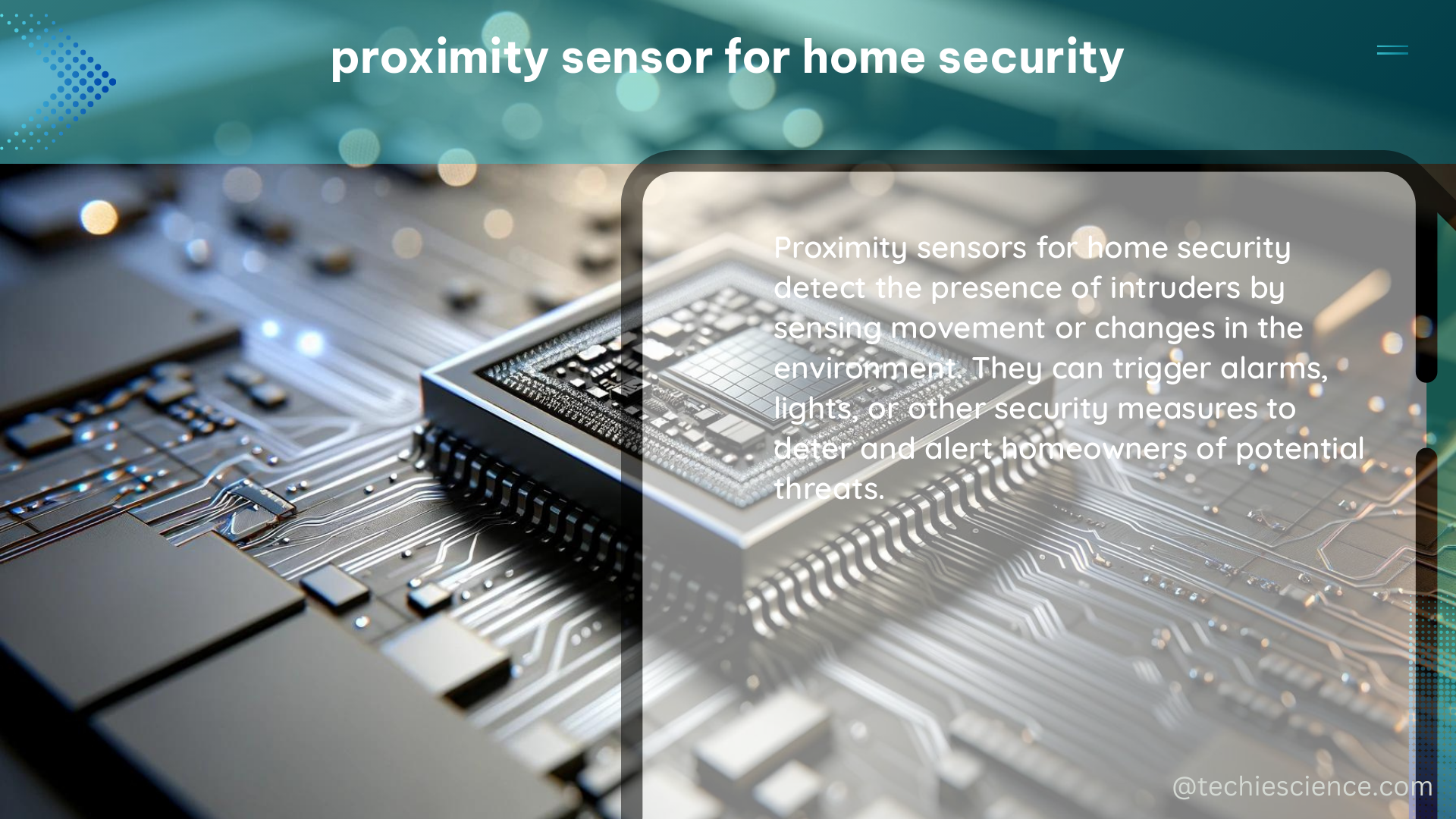Proximity sensors are essential devices in modern home security systems, providing an additional layer of protection against intruders. These sensors use various technologies, such as infrared, ultrasonic, or microwave, to detect the presence of objects or individuals within a specific range without physical contact. By triggering an alarm when an intrusion is detected, proximity sensors play a crucial role in safeguarding your home and family.
Understanding Proximity Sensor Technologies
Infrared Proximity Sensors
Infrared proximity sensors are one of the most common types used in home security. These sensors emit infrared light and detect the reflection of that light when an object or person enters the sensor’s field of view. Infrared sensors typically have a range of 5 to 10 meters, making them suitable for monitoring entrances, windows, and other access points.
Ultrasonic Proximity Sensors
Ultrasonic proximity sensors use high-frequency sound waves to detect the presence of objects. These sensors emit a sound pulse and measure the time it takes for the pulse to reflect off an object and return to the sensor. Ultrasonic sensors can detect objects up to 7 meters away and have a response time of less than 100 milliseconds.
Microwave Proximity Sensors
Microwave proximity sensors use radio frequency (RF) waves to detect the presence of objects. These sensors emit a microwave signal and measure the changes in the reflected signal when an object enters the sensor’s field of view. Microwave sensors can have a range of up to 20 meters, making them suitable for larger areas or outdoor applications.
Key Technical Specifications

Measurement Range
The measurement range of a proximity sensor is a crucial factor in determining its suitability for a particular home security application. Infrared sensors typically have a range of 5 to 10 meters, ultrasonic sensors can detect objects up to 7 meters away, and microwave sensors can have a range of up to 20 meters.
Response Time
The response time of a proximity sensor is the time it takes for the sensor to detect an object and trigger an alarm. High-quality ultrasonic sensors can have a response time of less than 100 milliseconds, ensuring a rapid response to potential intrusions.
Power Consumption
Proximity sensors for home security are designed to be energy-efficient, making them suitable for battery-powered operation. For example, an ultrasonic sensor can consume as little as 50 milliwatts of power, allowing for extended battery life and easy installation in remote locations.
Installation Considerations
Proximity sensors can be installed in various locations, such as doors, windows, or walls. The sensors can be wired or wireless, and some models come with tamper-proof features to prevent unauthorized access. When installing a magnetic contact sensor, it is essential to align the magnet and sensor switch properly, with a gap of no more than 1.5 cm between them. The sensor switch should be installed in a location where it is not easily accessible to intruders, and the wiring should be protected.
Integration with Other Security Systems
Proximity sensors for home security can be integrated with other security systems, such as motion detectors, cameras, or access control systems, to provide a comprehensive security solution. This integration allows for the coordination of multiple security measures, enhancing the overall effectiveness of the home security system.
Maintenance and Troubleshooting
To ensure the optimal performance of proximity sensors, regular maintenance and troubleshooting are essential. This may include checking the sensor’s alignment, testing the battery life, and monitoring the communication link between the sensor and the alarm control center. In the event of a malfunction, it is crucial to follow the manufacturer’s guidelines for troubleshooting and repair.
Conclusion
Proximity sensors are a vital component of modern home security systems, providing an additional layer of protection against intruders. By understanding the different technologies, key technical specifications, and installation considerations, homeowners can select and install the most suitable proximity sensors for their specific security needs. By integrating these sensors with other security measures, homeowners can create a comprehensive and reliable home security solution to safeguard their property and loved ones.
References:
- Javaid, M. H., Rab, A., Shanay, S., & Suman, R. (2021). Sensors for daily life: A review. Sensors, 21(1), 1-32.
- Sensing and Sensor Fundamentals. (2014). In Sensor Technologies (pp. 1-29). Apress, Berkeley, CA.
- NUREG-1959 “Intrusion Detection Systems and Subsystems. (2011). U.S. Nuclear Regulatory Commission.
- Human Factors Considerations for Quantifiable Human States in Physical Human–Robot Interaction: A Literature Review. (2020). PLOS ONE, 15(10), e0240385.

The lambdageeks.com Core SME Team is a group of experienced subject matter experts from diverse scientific and technical fields including Physics, Chemistry, Technology,Electronics & Electrical Engineering, Automotive, Mechanical Engineering. Our team collaborates to create high-quality, well-researched articles on a wide range of science and technology topics for the lambdageeks.com website.
All Our Senior SME are having more than 7 Years of experience in the respective fields . They are either Working Industry Professionals or assocaited With different Universities. Refer Our Authors Page to get to know About our Core SMEs.